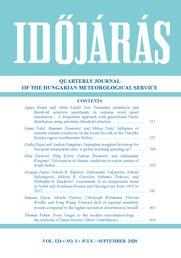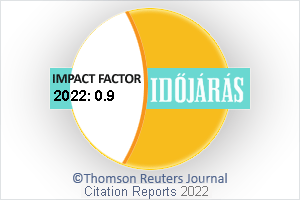Időjárás - Quarterly Journal of the Hungarian Meteorological Service (OMSZ)
Vol. 124, No. 3 * Pages 311–426 * July - September 2020
 |
|
 download [pdf: 3459 KB]
download [pdf: 3459 KB]
Influence of extreme climate conditions on the forest fire risk in the Timočka Krajina region (northeastern Serbia)
Ivana Tošić, Stanimir Živanović, and Milica Tošić
DOI:10.28974/idojaras.2020.3.2 (pp. 331–347)
Ivana Tošić, Stanimir Živanović, and Milica Tošić
DOI:10.28974/idojaras.2020.3.2 (pp. 331–347)
IDŐJÁRÁS - Quarterly Journal

Az IDŐJÁRÁS a HungaroMet Nonprofit Zrt. negyedévenként megjelenő angol nyelvű folyóirata
Megrendelhető a journal.idojaras@met.hu címen.
A szerzőknek szánt útmutató itt olvasható.
Megrendelhető a journal.idojaras@met.hu címen.
A szerzőknek szánt útmutató itt olvasható.









